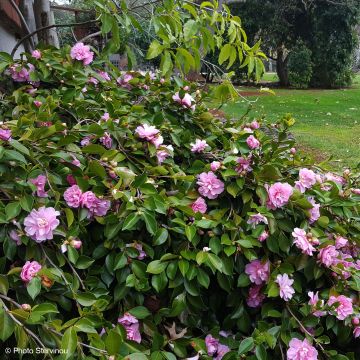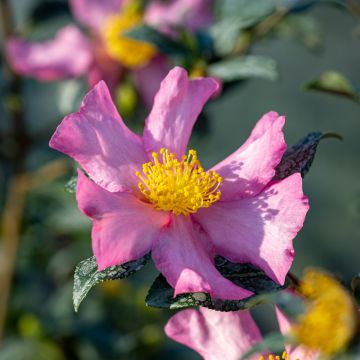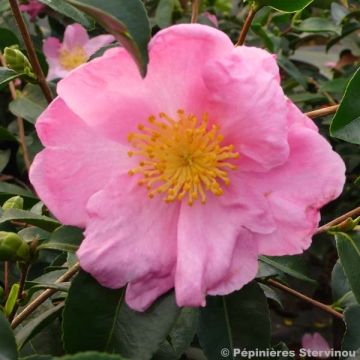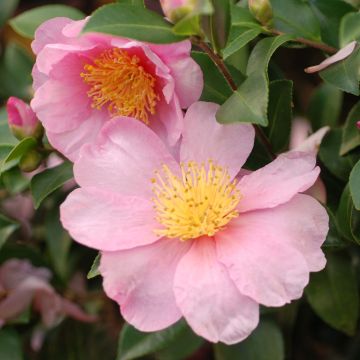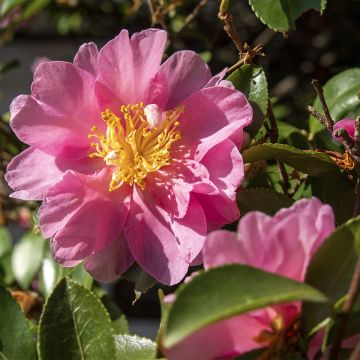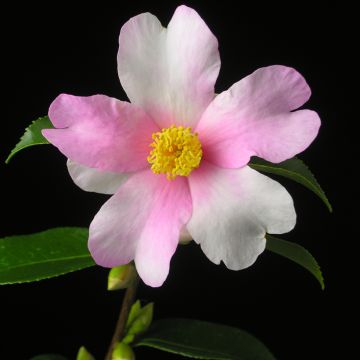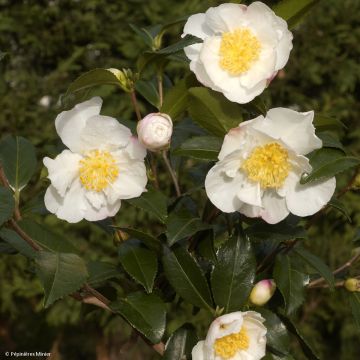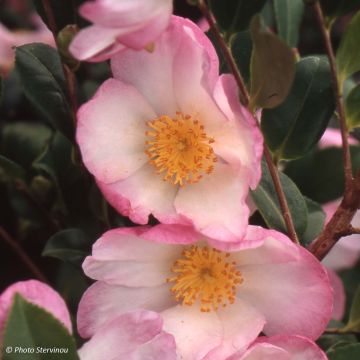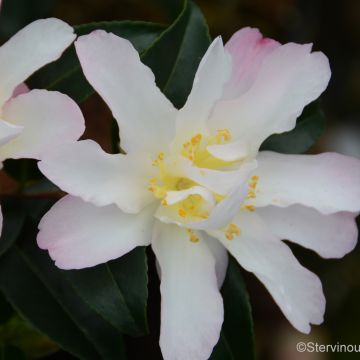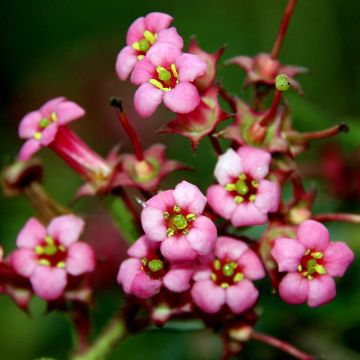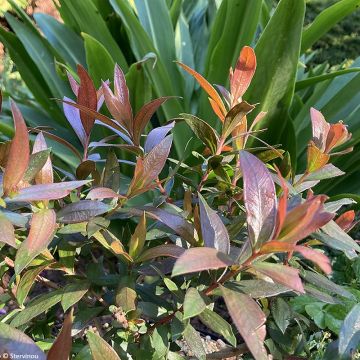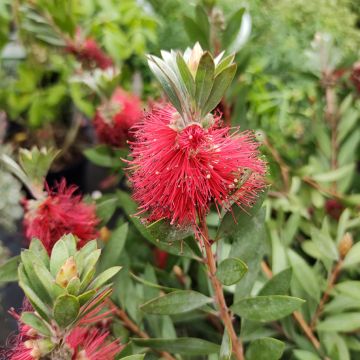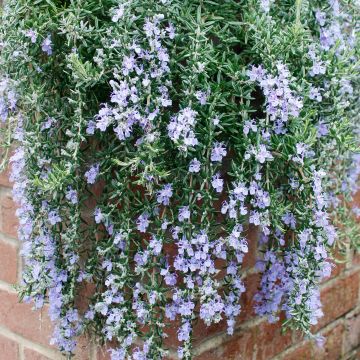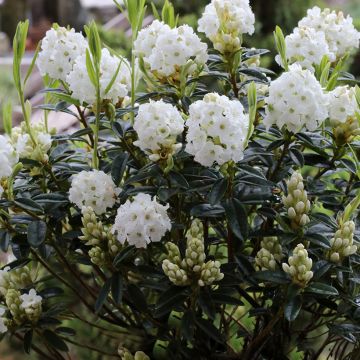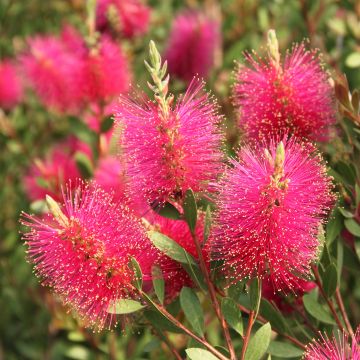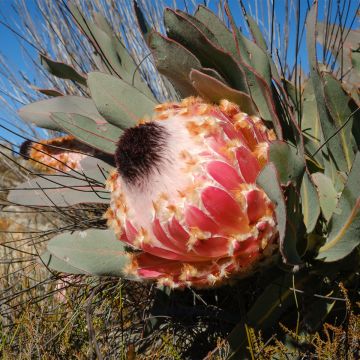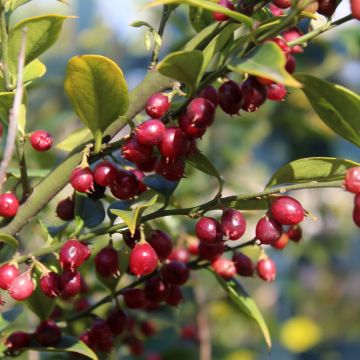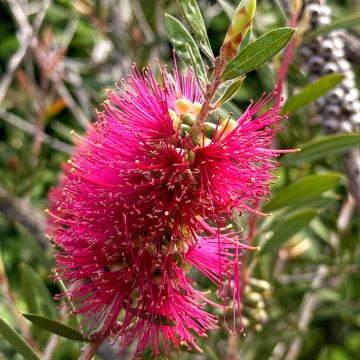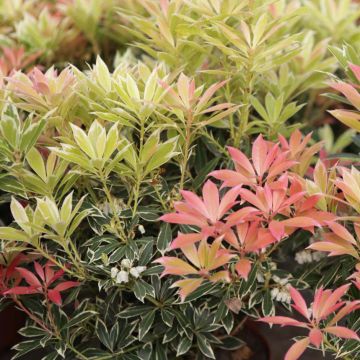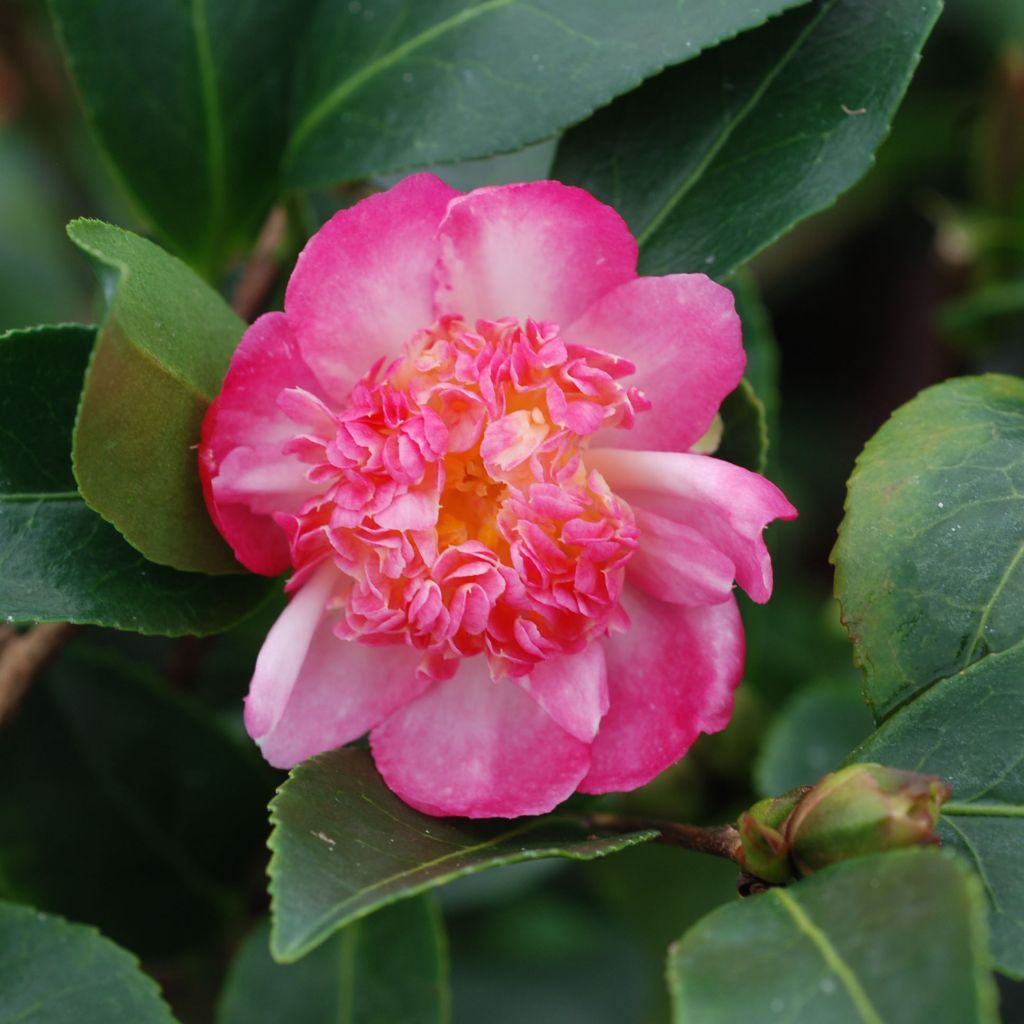

Camellia sasanqua Choji Guruma
Camellia sasanqua Choji Guruma
Camellia sasanqua Choji Guruma
Autumn Camellia, Christmas Camellia
A small flower
Muriel, 21/10/2024
Why not try an alternative variety in stock?
View all →This plant carries a 24 months recovery warranty
More information
We guarantee the quality of our plants for a full growing cycle, and will replace at our expense any plant that fails to recover under normal climatic and planting conditions.
From €5.90 for pickup delivery and €6.90 for home delivery
Express home delivery from €8.90.

Does this plant fit my garden?
Set up your Plantfit profile →
Description
Camellia sasanqua Choji Guruma, also known as autumn camellia, is a vigorous evergreen bush with an upright habit and early autumn flowering. It produces small double anemone-like flowers, light pink with darker pink edges, and is fragrant. It is one of the earliest varieties. It is hardy and capable of adapting to windy or sunny sites, however it requires moist soil in summer that is free from limestone. Grow it as a solitary plant in the garden, in a container, or even as a flowering hedge.
Very popular in Japan since the 18th century, the 'Choji Guruma' camellia is one of the many hybrids of the Camellia sasanqua species, which belongs to the family of Theaceae. This plant forms a compact, upright bush with a slow growth rate, reaching 1.50 m (5 ft) in height and 0.80 m (3 ft) in width in 10 years. Its adult size can ultimately reach 2.50 m (8 ft). Its blooms, early for an autumn camellia, last from late September to December. At the beginning round buds appear, bright pink. Then come the flowers, 5 to 6 cm (2 to 2.4 in) in diameter, double, resembling anemones: a corolla of pale pink petals bordered by dark pink surrounds a heart of tightly clustered petals, slightly crumpled, in the same shades of pink. A golden yellow stamen heart reveals itself late. They are not very long-lasting, but continuously renew on the plant, leaving a carpet of petals on the ground, like cherry trees in Japan. The dense and evergreen foliage is composed of small, fairly dark green, shiny, ovate and leathery leaves, paler on the underside.
Camellia x sasanqua 'Choji Guruma', like its Japanese parent, tolerates sun and windy conditions better than other camellias. It performs better in mild climates than in cold regions, where its hardiness is sometimes lacking and its flowering can be compromised. Wherever winters are not too harsh, it can be planted in the garden as a solitary plant, or combined with other acid-loving plants (Rhododendron, azaleas, Hydrangea, Hamamelis) in a flowering hedge. The 'Choji Guruma' camellia deserves a prime location, at the entrance of the garden or alongside a path. You can also plant autumn bulbs around its base, such as colchicums or cyclamen. In colder regions, it can be planted on a balcony or terrace, and brought indoors to a conservatory or cold greenhouse during the flowering period. It can also be protected from the cold inside the house, as long as its foliage is regularly misted and it is watered with non-calcereous water.
Report an error about the product description
Camellia sasanqua Choji Guruma in pictures
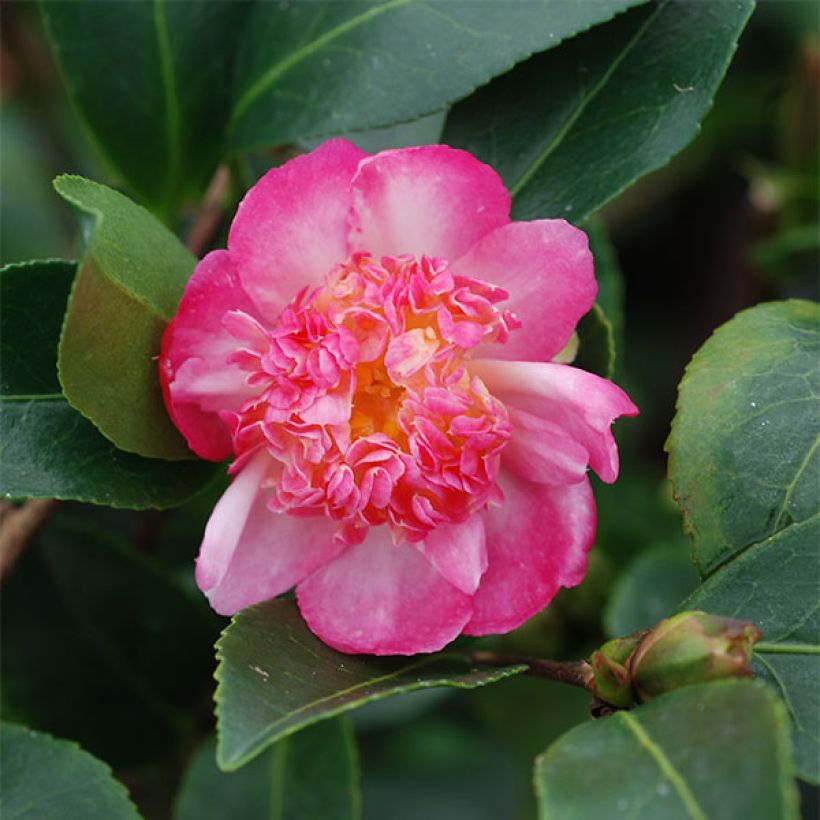

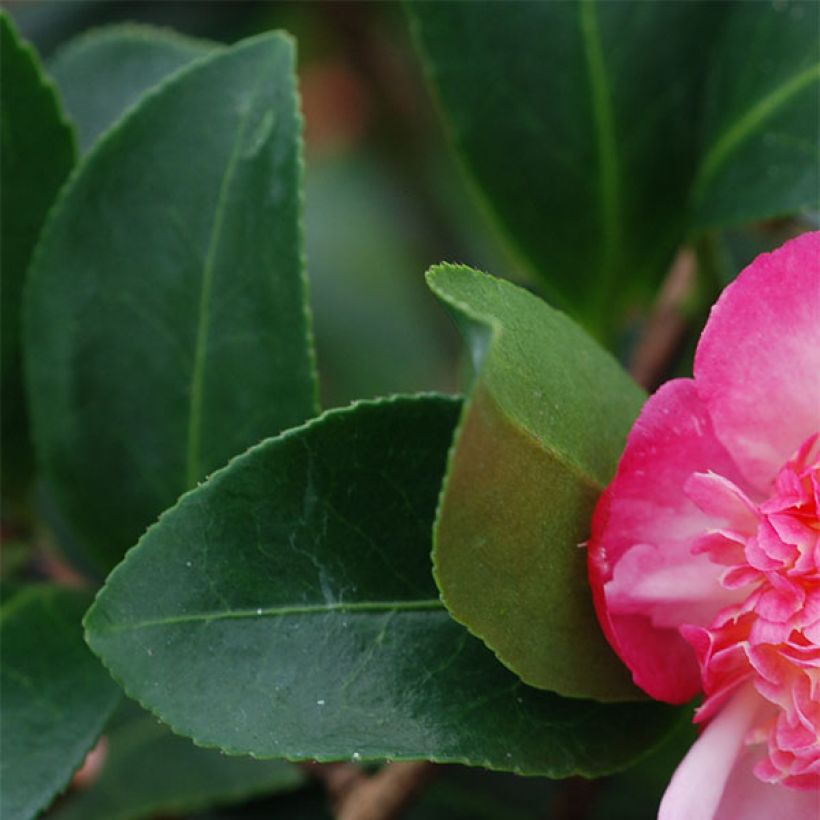

Plant habit
Flowering
Foliage
Botanical data
Camellia
sasanqua
Choji Guruma
Theaceae
Autumn Camellia, Christmas Camellia
Cultivar or hybrid
Other Autumn Camellia
Planting and care
Camellia sasanqua can be placed in a partially shaded area sheltered from cold and drying winds. You can grow it in full sun but the roots need to stay cool. Plant it in a fresh, humus-rich, acidic, and well-drained soil. The bush should not be planted too deeply; the top of the root ball should be covered with 3 cm (1.2 in) of soil. In winter cover it with a 5 to 7 cm (2 to 3 in) thick mulch composed of leaf compost and crushed bark. Beware of late frosts that can damage the flowers and buds. Water during dry periods to prevent the bush dropping flower buds. Pruning should be done every year after flowering. Lightly prune any stems that prevent the bush from maintaining its compact appearance. Remove faded flowers if you do not want fruits and remove dead shoots. The mature Camellia can withstand hard pruning. Camellia sasanqua can be susceptible to root rot, leaf spots, and viruses. It can be attacked by aphids and scale insects that cause sooty mould, as well as by weevils.
Planting period
Intended location
Care
-
, onOrder confirmed
Reply from on Promesse de fleurs
Evergreen shrubs
Haven't found what you were looking for?
Hardiness is the lowest winter temperature a plant can endure without suffering serious damage or even dying. However, hardiness is affected by location (a sheltered area, such as a patio), protection (winter cover) and soil type (hardiness is improved by well-drained soil).

Photo Sharing Terms & Conditions
In order to encourage gardeners to interact and share their experiences, Promesse de fleurs offers various media enabling content to be uploaded onto its Site - in particular via the ‘Photo sharing’ module.
The User agrees to refrain from:
- Posting any content that is illegal, prejudicial, insulting, racist, inciteful to hatred, revisionist, contrary to public decency, that infringes on privacy or on the privacy rights of third parties, in particular the publicity rights of persons and goods, intellectual property rights, or the right to privacy.
- Submitting content on behalf of a third party;
- Impersonate the identity of a third party and/or publish any personal information about a third party;
In general, the User undertakes to refrain from any unethical behaviour.
All Content (in particular text, comments, files, images, photos, videos, creative works, etc.), which may be subject to property or intellectual property rights, image or other private rights, shall remain the property of the User, subject to the limited rights granted by the terms of the licence granted by Promesse de fleurs as stated below. Users are at liberty to publish or not to publish such Content on the Site, notably via the ‘Photo Sharing’ facility, and accept that this Content shall be made public and freely accessible, notably on the Internet.
Users further acknowledge, undertake to have ,and guarantee that they hold all necessary rights and permissions to publish such material on the Site, in particular with regard to the legislation in force pertaining to any privacy, property, intellectual property, image, or contractual rights, or rights of any other nature. By publishing such Content on the Site, Users acknowledge accepting full liability as publishers of the Content within the meaning of the law, and grant Promesse de fleurs, free of charge, an inclusive, worldwide licence for the said Content for the entire duration of its publication, including all reproduction, representation, up/downloading, displaying, performing, transmission, and storage rights.
Users also grant permission for their name to be linked to the Content and accept that this link may not always be made available.
By engaging in posting material, Users consent to their Content becoming automatically accessible on the Internet, in particular on other sites and/or blogs and/or web pages of the Promesse de fleurs site, including in particular social pages and the Promesse de fleurs catalogue.
Users may secure the removal of entrusted content free of charge by issuing a simple request via our contact form.
The flowering period indicated on our website applies to countries and regions located in USDA zone 8 (France, the United Kingdom, Ireland, the Netherlands, etc.)
It will vary according to where you live:
- In zones 9 to 10 (Italy, Spain, Greece, etc.), flowering will occur about 2 to 4 weeks earlier.
- In zones 6 to 7 (Germany, Poland, Slovenia, and lower mountainous regions), flowering will be delayed by 2 to 3 weeks.
- In zone 5 (Central Europe, Scandinavia), blooming will be delayed by 3 to 5 weeks.
In temperate climates, pruning of spring-flowering shrubs (forsythia, spireas, etc.) should be done just after flowering.
Pruning of summer-flowering shrubs (Indian Lilac, Perovskia, etc.) can be done in winter or spring.
In cold regions as well as with frost-sensitive plants, avoid pruning too early when severe frosts may still occur.
The planting period indicated on our website applies to countries and regions located in USDA zone 8 (France, United Kingdom, Ireland, Netherlands).
It will vary according to where you live:
- In Mediterranean zones (Marseille, Madrid, Milan, etc.), autumn and winter are the best planting periods.
- In continental zones (Strasbourg, Munich, Vienna, etc.), delay planting by 2 to 3 weeks in spring and bring it forward by 2 to 4 weeks in autumn.
- In mountainous regions (the Alps, Pyrenees, Carpathians, etc.), it is best to plant in late spring (May-June) or late summer (August-September).
The harvesting period indicated on our website applies to countries and regions in USDA zone 8 (France, England, Ireland, the Netherlands).
In colder areas (Scandinavia, Poland, Austria...) fruit and vegetable harvests are likely to be delayed by 3-4 weeks.
In warmer areas (Italy, Spain, Greece, etc.), harvesting will probably take place earlier, depending on weather conditions.
The sowing periods indicated on our website apply to countries and regions within USDA Zone 8 (France, UK, Ireland, Netherlands).
In colder areas (Scandinavia, Poland, Austria...), delay any outdoor sowing by 3-4 weeks, or sow under glass.
In warmer climes (Italy, Spain, Greece, etc.), bring outdoor sowing forward by a few weeks.

































